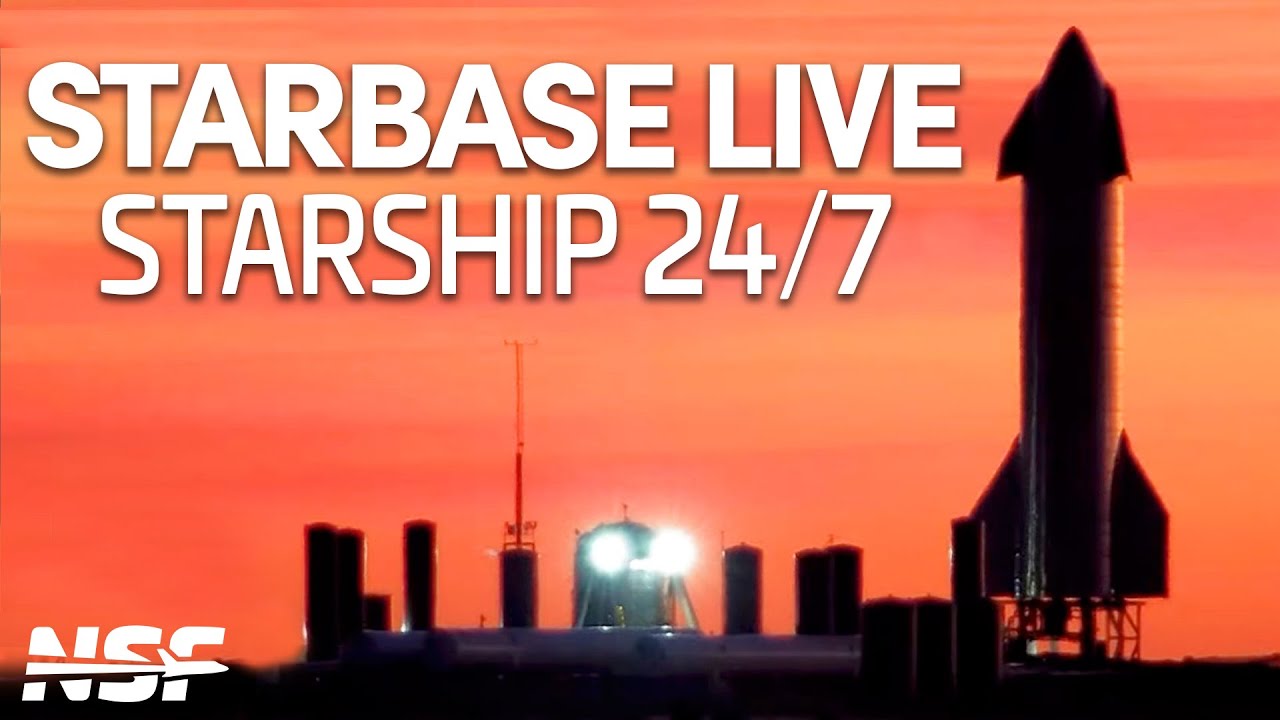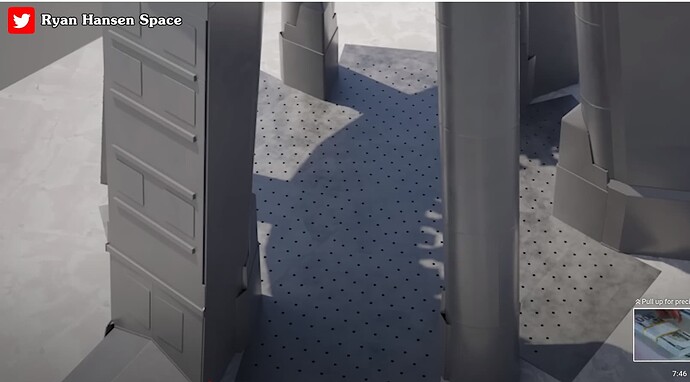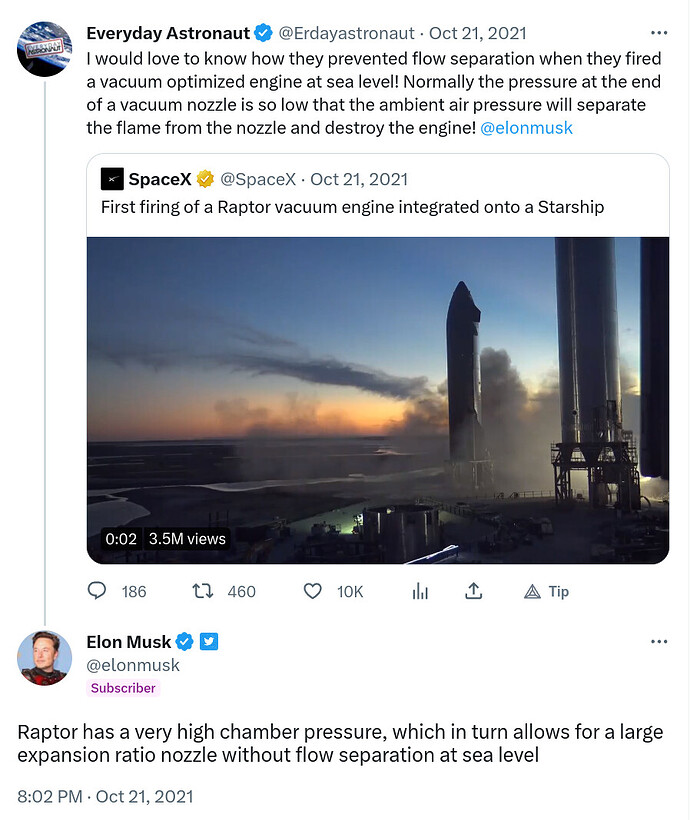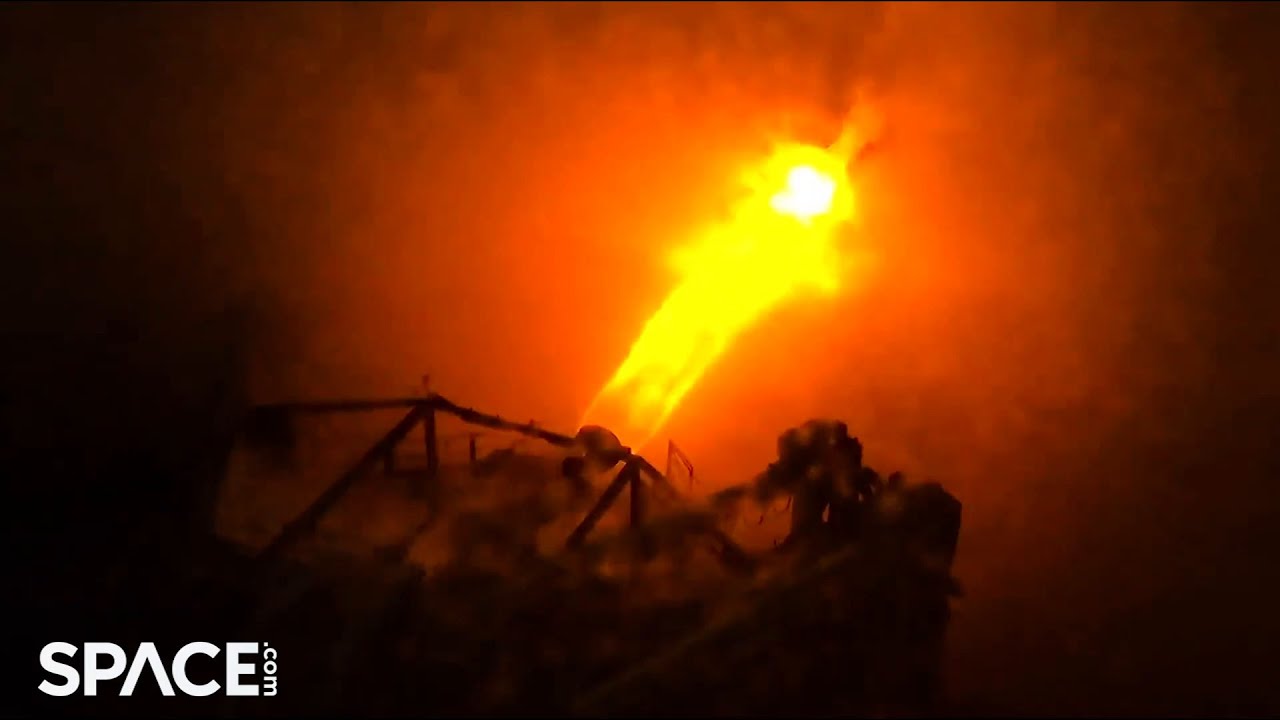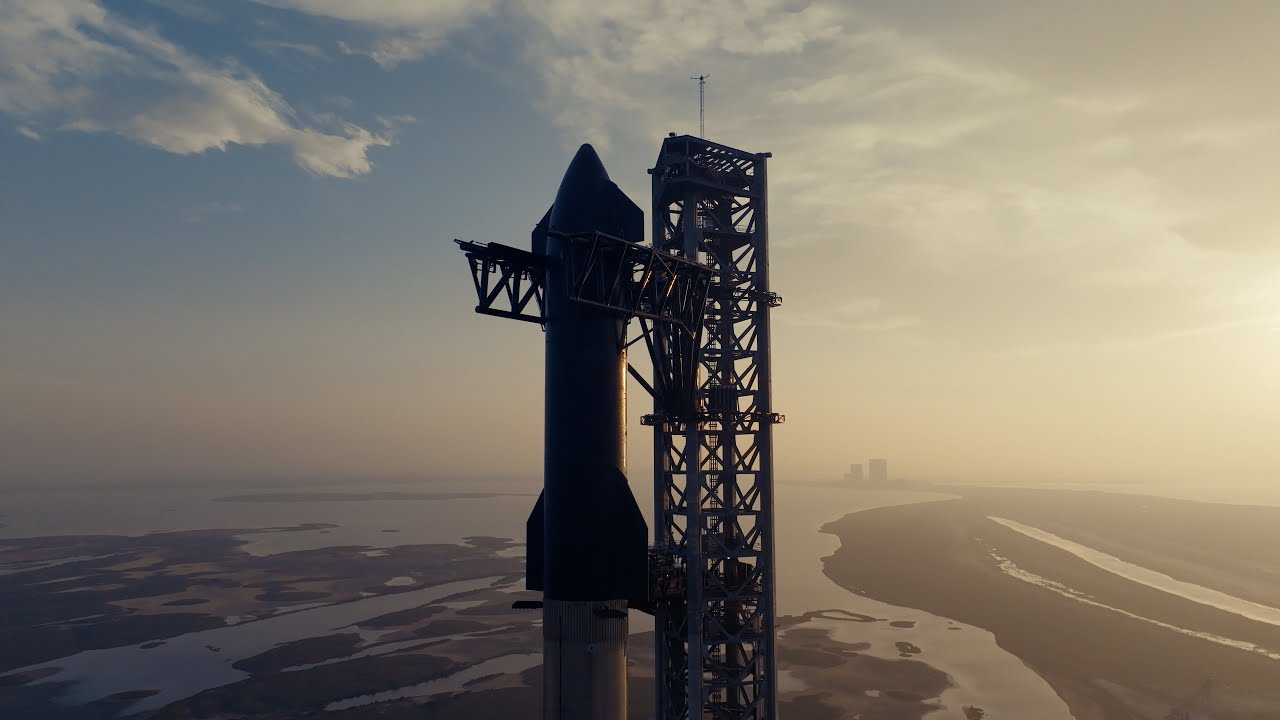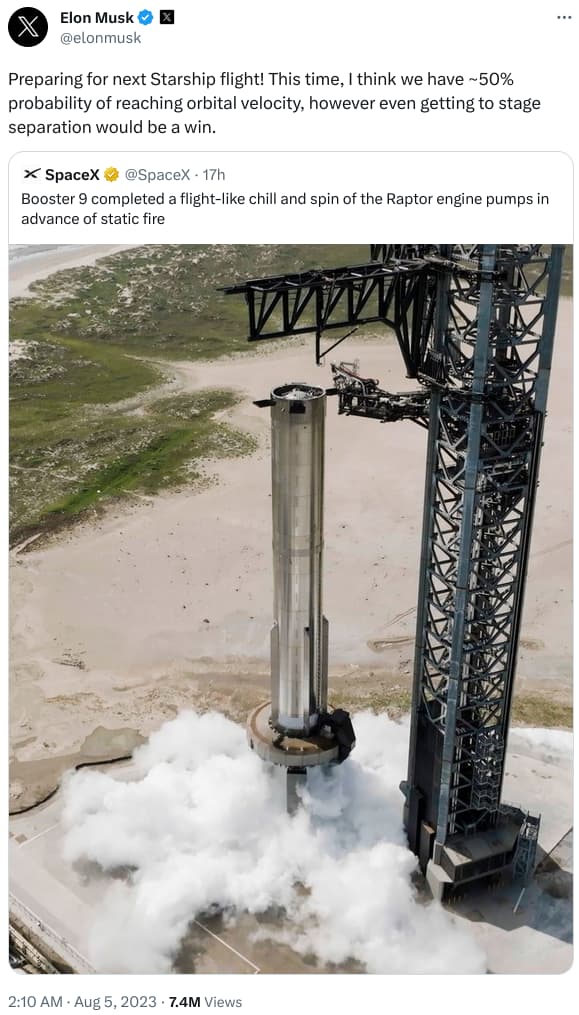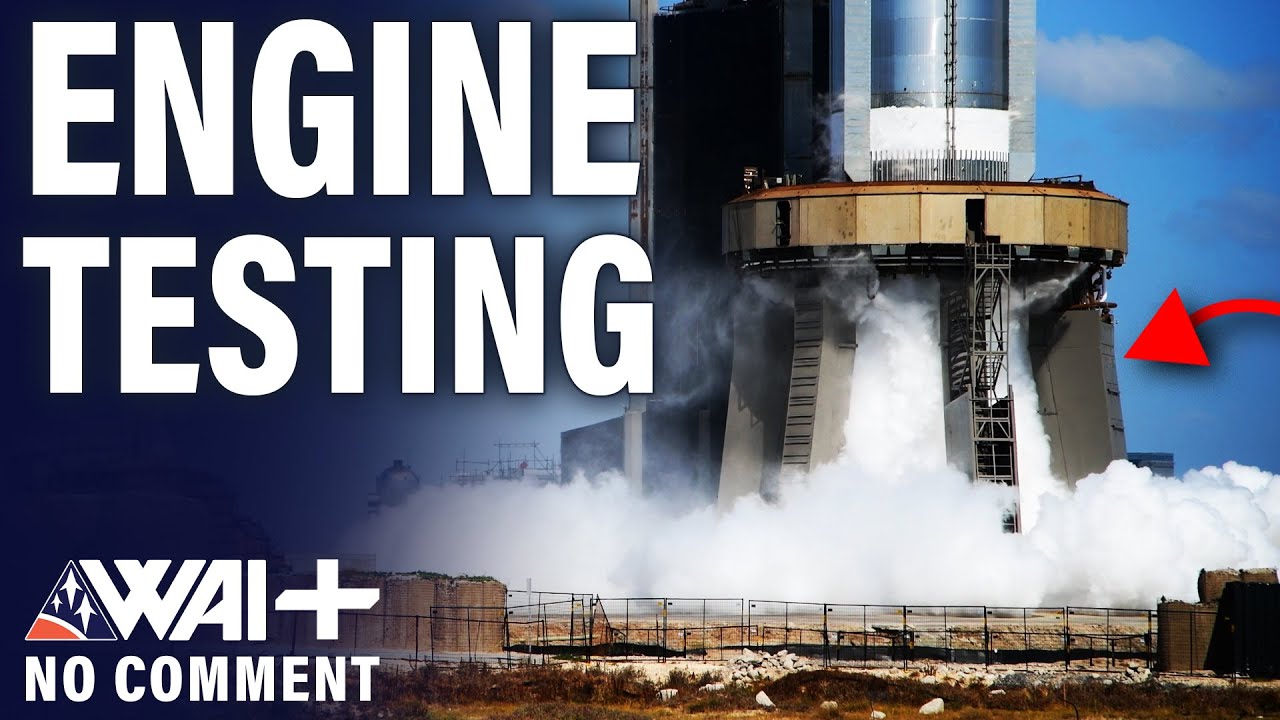This video at 2:27 of the N1 shows the takeoff contraction of the booster plume resembles the sea-level aerospike plume:
I know there is a lot of talk about the N1 project “investigating” various configurations of aerospikes but it appears to me they actually achieved it by the simple expedient of appropriate arrangement of their booster engines.
The first stage of the N1 was designed to ingest air in inlets at the interstage which was released in ports in a ring between the 24 outer engines and the six inner engines. This was intended to augment the thrust of the fuel-rich engines at low altitudes by burning excess fuel with atmospheric oxygen. The Wikipedia article on the N1 notes this may also “could have been an attempt at creating a crude version of a toroidal aerospike engine”.
Kuznetsov, who had limited experience in rocket design, responded with the NK-15, a fairly small engine that would be delivered in several versions tuned to different altitudes. To achieve the required amount of thrust, it was proposed that 30 NK-15s would be used in a clustered configuration. An outer ring of 24 engines and an inner ring of six engines would be separated by an air gap, with airflow supplied via inlets near the top of the booster. The air would be mixed with the exhaust in order to provide some degree of thrust augmentation, as well as engine cooling. The arrangement of 30 rocket engine nozzles on the N1’s first stage could have been an attempt at creating a crude version of a toroidal aerospike engine system; more conventional aerospike engines were also studied.
Truly crazy great idea: Within the next couple of weeks, unstack the Starship upper stage from the SuperHeavy, move it to the smaller launch pad, empty its cargo bay and launch as single stage to a couple of orbits, with reentry landing to get both a morale boost and a lot of data right now.
Well at least it now appears clear that they’re doing the moral equivalent of film cooling the steel plate. Look at the holes in this picture. It’s still unclear to me whether these holes can get the droplets high enough in the shocks to dissipate their hazard. Maybe they are going to have the “rainbirds” you mentioned higher up.
I watched that video, but I don’t think they made the sale as to whether Starship as it stands now can actually get to orbit by itself (SSTO). If you take the specifications as given by Wikipedia, Starship has gross mass of 1300 tonnes and dry mass of 100 tonnes for a propellant mass fraction of 0.913, which is just barely within the range enabling SSTO. If we assume it takes 7.9 km/sec delta-v to make orbit once you add in gravity and atmospheric drag losses on ascent, that means you need mean exhaust velocity of 3.08 km/sec from the engines. The Raptor page gives sea-level exhaust velocity as 3.21 km/sec and vacuum as 3.56 km/sec, so at first glance it looks like we can squeak by. But the Raptor vacuum engines were designed to be lit only at altitude, so I don’t know how they would perform if fired at sea level and whether, for example, flow separation might destroy the vacuum engine bells in that circumstance. Also, there’s every reason to believe that early serial number Starships are heavy compared to the specifications quoted for the mature design. As I recall, Elon Musk said in the Starbase tour with Everyday Astronaut that the Starship they saw being assembled had a mass around 150 tonnes and that 100 tonnes was the target for the final operational version. For early test flights with no payload, there’s no reason to spend lots of time and money saving mass, so I’ll bet the ships they have are all heavy. The stripper versions which appear to have been built for expendable Starlink missions with no thermal protection system and landing fins may be light enough, but they wouldn’t provide the re-entry and hypersonic atmospheric flight data they seek from the early orbital flight tests.
Everything in that image looks very clean. Is it real or a digital mock up?
Where are the massive water pipes that can deliver 100 tons of water per second?
I’m not so sure “crude” is a better description than “practical”. When I saw the N1 exhaust plume, it triggered my memory of working on some ideas for a centrifugal aerospike that I abandoned when Roger Gregory and I started work on the ultracentrifugal rocket engine. Aside from the racetrack instability that plagued annular aerospikes (and that rotating detonation engines seek to harness), there were a number of aspects that didn’t seem to scale well with the “pure” annular engines, but that did work out with multiple engines in a ring surrounding a gas spike.
But I don’t recall the exact scaling problems I ran onto so it may have been premature to abandon the approach and “crude” may, indeed, be the proper term.
It’s a digital mockup but it is based on aerial photos of actual components at the site that had not yet been installed as pictured.
All good points that they needed, but failed to make the case. The flow separation problem may have been addressed by Musk in this tweet:
If, for example, the vacuum Raptor has enough throttle margin to overcome sea level pressure for the full length of the expansion bell, it might also deliver enough additional thrust to help overcome some of the disadvantage of fighting gravity during vertical acceleration. Wouldn’t that increase Max-Q (and lower its altitude hence raise the static pressure at Max-Q) hence stress on Starship? And might that require further throttle-back authority to the point that the higher static pressure could cause flow separation?
Yep… there are lots of devils in the details they didn’t address. Oh well…
Video and audio from South Padre Island from an iPhone 8 Plus
SpaceX has released this video of a Raptor engine firing directly into a “water cooled steel plate”, presumably to test how their Super Heavy launch mount deluge system will work. The full speed video, which looks to be about as long as direct flame would impinge on the base during a launch, is followed by a slow motion replay.
The May 8–21 2023 issue of Aviation Week has an article (p. 22), “Engine Failures Doomed SpaceX Super Heavy Debut Flight” by Irene Klotz, senior space editor of the publication. This was written after Elon Musk’s Twitter Spaces interview and contains some information I had not seen before.
The trouble began 27 sec. later when an “energetic event” broke off communications with engine No. 19 and blasted away the outer heat shield protecting four neighboring engines.
⋮
Sixty-two seconds after liftoff, another engine sustained heat shield damage but continued to run. Musk added: “At T-plus 85 seconds is where things really hit the fan.”
Engine 6 lost communications due to a thrust vector control issue, then the vehicle’s whole steering system failed. Five seconds later, the automated flight termination system triggered to detonate explosives to rupture the fuel tanks and end the flight.
However. the ordnance did not ignite for about 40 sec., leaving the 400-ft. tall Starship/Super Heavy slowly tumbling above the Gulf of Mexico.
The article closes quoting Musk, “I don’t want to tempt fate, but I think [we’re] close to 100% chance [of] reaching orbit within 12 months.”
Note that he didn’t say “reach orbit and return” within 12 months. That makes this tweet from a few hours ago interesting, particularly given our earlier speculation about using expendable Starship upper stages to launch Starlink v2 full size satellites while working on Starship re-entry and reusability in parallel.
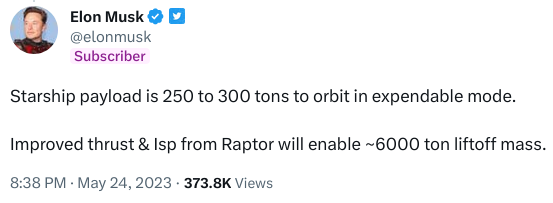
SpaceX has released this official two minute recap video of the flight test.
There’s nothing of the ship in flight we haven’t seen before, but there are some interesting shots from inside mission control, including at 0:47 just after liftoff where you can see the vibration and low frequency sound from the booster causing the windows behind the flight control room to vibrate in and out. This is the same phenomenon that so impressed Walter Cronkite covering the first launch of the Saturn V (Apollo 4) on 1969-11-09.
I watched this live on television as it happened.
Acoustic pressure and vibrations associated with a Saturn V launch was something engineers had to think through because even though the launch complex was three miles from the VAB the anticipated sound power of about 145 decibels could damage the structure. The solution was to build the VAB using insulated aluminum panels fastened to steel girders to protect it and anything inside from the acoustics of a launch.
Current schedule in the lawsuit may take until the end of the year just to settle on the contents of the administrative record.
MINUTE ORDER. Upon review of Defendants’ 19 Consent Motion for Extension of Time and for the Court to Set an Initial Briefing Schedule, it is ORDERED that the Motion is GRANTED. Defendants shall lodge the administrative record on or before September 29, 2023, and the Parties shall abide by the following briefing schedule: the Plaintiffs’ deadline to challenge the contents of the administrative record is October 27, 2023; the Defendants’ deadline to file an opposition to the Plaintiffs’ motion to challenge the administrative record is November 17, 2023; and the Plaintiffs’ deadline to file a reply in support of their motion challenging the administrative record is December 5, 2023. It is further ORDERED that the Parties shall file a joint status report proposing a briefing schedule as to summary judgment within 14 days of the Courts resolution of the Plaintiffs’ motion challenging the administrative record, if any is filed. If the Plaintiffs choose not to challenge the administrative record, the Parties shall file a joint status report setting forth a proposed briefing schedule by October 27, 2023. Signed by Judge Carl J. Nichols on July 25, 2023.
Here is video of the “spin prime” test of Super Heavy booster #9 conducted on 2023-08-04. In a spin prime test, propellant flows through the engines as it would in a static firing or launch, but is not ignited. The mist that appears to originate around the launch mount prior to the test is the fire suppression water spray that was installed after the Booster 7 spin prime test explosion on 2022-07-12. The large white clouds from the engines are the propellant from the actual spin prime test.
